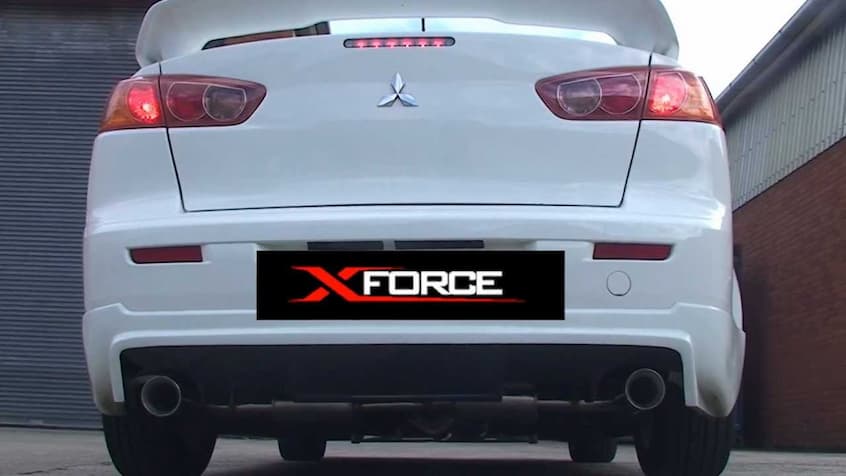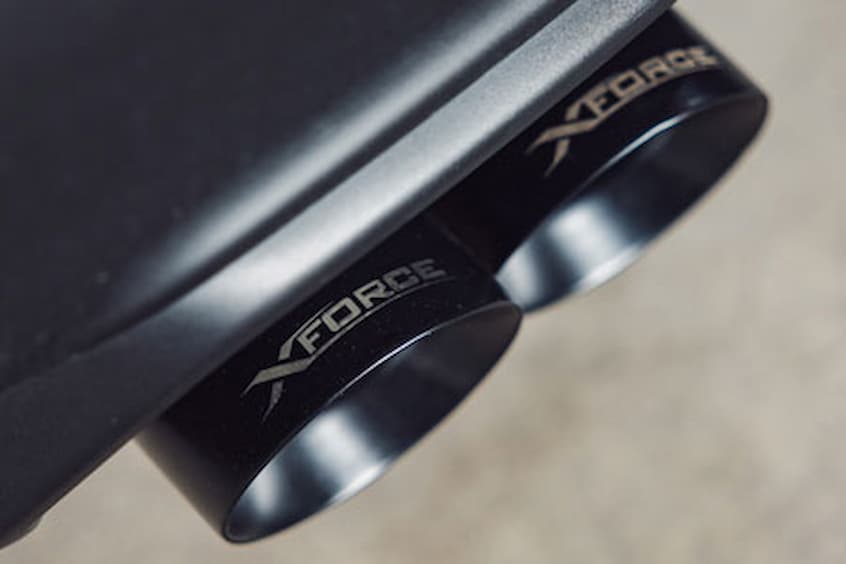
Your Guide to Aftermarket Exhaust Upgrades
Anyone considering major upgrades and more power starts with simple parts that optimise airflow. Air intakes and exhausts are the pairing that provides the foundation for all subsequent engine upgrades. The parts balance engine performance, longevity and fuel use with visual and sonic changes. And they’re an affordable way to transform any car into something you’ll actually enjoy driving.
Why Upgrade Your Stock Exhaust?

Exhaust designs in production cars are largely dictated by current emissions and noise level regulations. These aim to quell the sound from bigger, more powerful engines and to limit the toxic gases they release. A noble cause that also cripples engines in terms of how much power they produce and how loud they can get.
Factory designs revolve around narrow-diameter pipes, often with multiple bends. This creates backstops to airflow, such as backpressure, or lingering gases pushing on the pipe walls (or returning to the exhaust manifold), with fresh intake air and spent gases mixing and reducing combustion efficiency. Moreover, restrictive parts such as GPF filters combine with already existing catalytic converters to slow spent gases on their way out (and get cleansed of pollutants), while resonators and mufflers tame sound levels by limiting exhaust velocity.
These are just some of the performance issues which can be solved by purchasing an aftermarket exhaust online or from a local shop. By going wider and straighter, the piping in performance exhaust systems ensures fewer restrictions in gas flow, helping the engine draw cooler, oxygen-rich air needed for the next combustion cycle. In simple terms, a performance exhaust lets the engine breathe. And this is where added power and torque lie.
Benefits of Aftermarket Systems
Performance Benefits
Pushing spent gases out faster through wide-diameter pipes provides multiple benefits. With improved velocity and fewer restrictive parts, engines are freer to get on their business. Full systems are estimated to bump power numbers by 5 per cent over stock, so a performance car with 300hp will comfortably add another 15hp to wheels. Torque is also more present, especially lower in the rev range, for harder pulling. The combined result is an engine that’s more eager and revs harder. The car is more responsive on the throttle, accelerates faster, has more in reserve when pushed harder (with extra torque) and reaches higher top speeds.
Improved Fuel Efficiency
Often overlooked, better fuel efficiency is directly related to optimised airflow. By ridding itself of spent gases faster, the engine can optimise air intake and fuel for the load. While numbers range between 2% and 5%, or (10 km more per average 50L fuel tank), the savings add up in the long term. Besides fewer visits to service stations, cars will also cover larger distances on a single tank. Provided this is at normal RPMs. Push the throttle down further and for longer, and those numbers soon change.
Durability with Superior Materials and Production Methods

One area where aftermarket exhausts excel is in superior durability. Instead of crush-bent mild steel commonly seen in production systems, aftermarket exhausts use higher (304 and 409) stainless steel grades that have been formed by a mandrel to ensure uniform diameters. This also prevents the piping from kinking or flattening, and thus impeding proper exhaust flow.
Both stainless grades have much higher heat resistance (due to the higher chromium content), with 304 going up to 870 degrees without issues. This is ideal in engines with upgraded turbos or big-bore and stroker kits with revised pistons, conrods and cranks. The materials additionally have higher impact resistance, meaning pipes stay unscathed when hitting potholes, speed bumps and other road obstacles. Lastly, go with stainless steel for the improved corrosion resistance, especially if you live in wet or humid areas.
Deeper, Louder Sound
A significant difference between a stock and aftermarket exhaust is how they sound. Restrictive parts and multiple bends kill sound waves but also hinder flow. Remaining sound waves are further stifled and muted in mufflers and resonators. Performance systems, on the other hand, not only improve airflow but also the sound. Both are related. Free-flowing air produces a deeper and louder exhaust note, urged on by parts like straight-through mufflers, high-flow catalytic converters or proprietary tech such as muffler valving. All while ensuring the engine reaches its pollutant target.
Improved Heat Management
For the outlay of a performance exhaust, consider the favours you’re doing to the engine in terms of managing excess heat. By speeding up exhaust gases and ensuring heat remains in the piping, along with extras like heat shields and insulative materials, aftermarket systems drastically reduce heat soak and damage to adjacent parts. Moreover, this ensures lower air temperatures at the intake end, and reduced pressure and heat on parts like exhaust valves, springs and cams. Combined, the lower heat and pressure in the engine bay raise engine longevity.
Choosing the Right Exhaust for Your Needs
When browsing for an aftermarket exhaust online, consider your budget, the expected results, and whether exhaust parts and systems are compatible with the engine in your car. Prices are dependent on layouts and materials. Axle-back systems are the most affordable and include new exhaust parts from the rear axle to the tips. These focus mainly on the sound, with minimal power gains.
There’s more performance in cat-back systems with wider mid-pipes, while full header or turbo-back exhausts come at a premium but also offer the most power. Prices also depend on materials and build. Stainless steel is the entry to high-performance systems, but more costly titanium or Inconel parts benefit from even more strength and shed considerable weight – up to 10 kilos in full configurations.
Single or dual systems are dependent on engine displacement, cylinder count and whether it relies on forced induction. Single piping is seen mainly in 4-cylinder engines, while dual layouts are more common in 6 and 8-cylinder engines in an inline or V configuration. In addition, header-back systems are seen in naturally aspirated cars, while turbo-backs are naturally required in cars with forced induction. This ensures engine and exhaust compatibility. Shop systems and parts from reliable exhaust builders that use advanced production methods, decent materials and exhausts compatible with your car.

